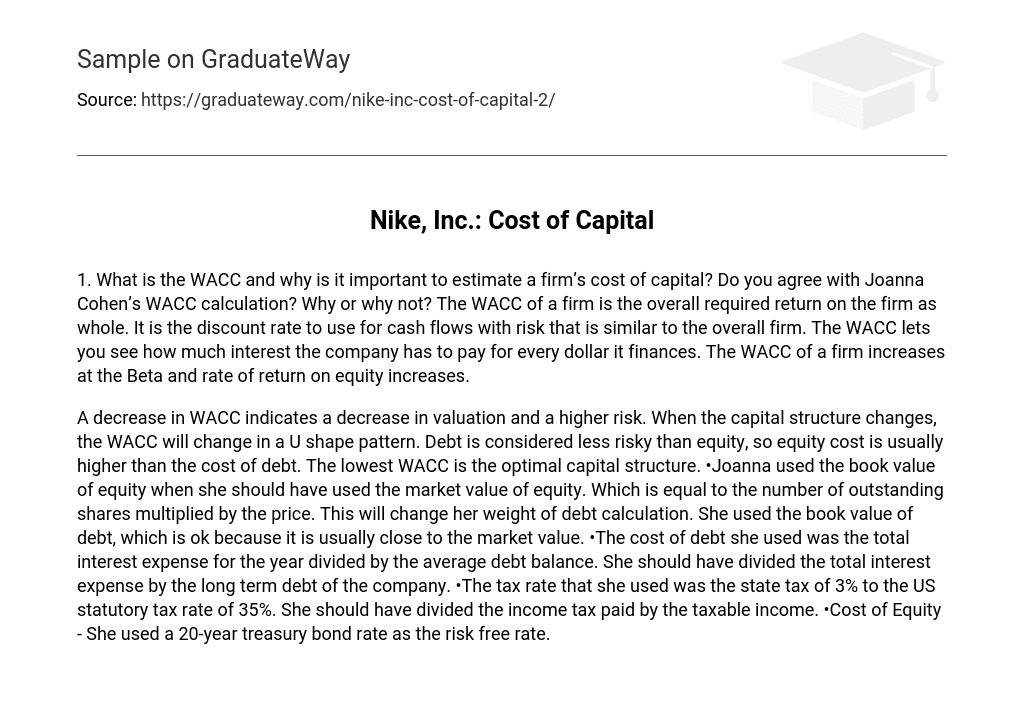1. The WACC, or weighted average cost of capital, is a crucial measure to determine a company’s cost of capital. Understanding the WACC is essential for estimating the overall required return on the firm. Whether or not Joanna Cohen’s WACC calculation is agreeable depends on individual perspectives and analysis. The WACC represents the discount rate applicable to cash flows with a similar level of risk as the entire firm. It provides insights into the interest expense the company incurs for each dollar financed. Additionally, as the Beta and rate of return on equity rise, the WACC of a firm also increases.
The decrease in Weighted Average Cost of Capital (WACC) indicates a decrease in valuation and an increase in risk. A change in capital structure results in a U-shaped pattern for WACC. Debt is considered less risky than equity, leading to a higher cost of equity compared to the cost of debt. The optimal capital structure is characterized by the lowest WACC.
• Joanna made an error by using the book value of equity instead of the market value, which is calculated by multiplying outstanding shares by price. This mistake will impact her calculation of debt weight. However, using the book value of debt is acceptable as it closely aligns with market value.
• Instead of dividing total interest expense for the year by average debt balance, she should have divided it by long-term debt to determine the cost of debt.
• Joanna mistakenly used a state tax rate of 3% along with the US statutory tax rate of 35% as her tax rate. To obtain an accurate tax rate, she should have divided income tax paid by taxable income.
• For calculating the cost of equity, she utilized a 20-year treasury bond rate as the risk-free rate.





